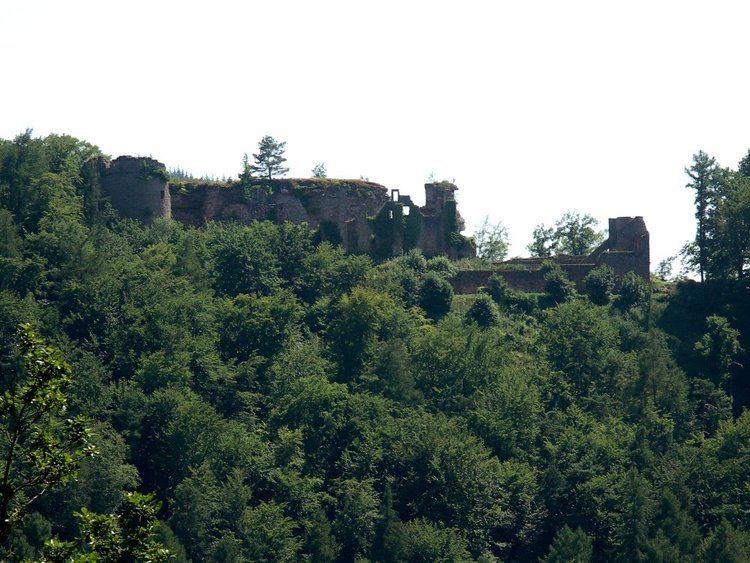Condition ruin Address 76835 Ramberg, Germany | Code DE-RP Built around 1232 Phone +49 6341 939527 | |
 | ||
Height 500 m above sea level (NN) Hours Open today · Open 24 hoursSaturdayOpen 24 hoursSundayOpen 24 hoursMondayOpen 24 hoursTuesdayOpen 24 hoursWednesdayOpen 24 hoursThursdayOpen 24 hoursFridayOpen 24 hoursSuggest an edit Similar Ramburg, Burg Meistersel, Trifels Castle, Madenburg Castle, Anebos Castle | ||
Neuscharfeneck castle in the palatinate forest
The castle of Neuscharfeneck is a ruin and a cultural monument above Ramberg and Dernbach on the territory of an exclave of Flemlingen in the district of Südliche Weinstraße in the west German state of Rhineland-Palatinate.
Contents
Location
The ruins are situated in the eastern part of the Palatine Forest. They lie at an elevation of 500 metres (1,600 ft) on the western foothills of the Kalkofen Berg in the middle of a forest and are only accessible over forest tracks.
Layout
The first castle, dating to the 13th century, was considerably smaller than the present ruins. Of the Hochstaufen castle only a few remnants have survived.
The entire site measures about 60 by 150 metres (200 by 490 ft). Its shield wall, built from ca. 1212 to 1232 and extended in the years 1470 and 1530, is the mightiest in the Palatinate, with a length of 58 metres (190 ft) and thickness of 12 metres (39 ft). Within the shield wall there are relatively few usable passages, chambers and casemates. It therefore acted - apart from the hoarding (Plattform) that has not survived - primarily as passive protection for the castle behind it. The original entrance was over a drawbridge through the shield wall into the castle.
In the castle gardens, rare herbs such as White Henbane, Ingräu and Abbey Hysop were planted.
There is still a partially surviving gateway with a flanking tower. Four water basins, chiselled out of the rock in the 13th century, were used as cisterns, that were supplied with rainwater and, from the 16th century, with water from the Roßberg Spring, 2 kilometres (1.2 mi) away, over pipes made of clay or hollow tree trunks.
The 30-metre (98 ft) long upper castle (Oberburg) on the central rock was built from 1212 to 1232 as the first residential building but has unfortunately not survived, apart from its well and an inaccessible chamber and steps in the rock.
